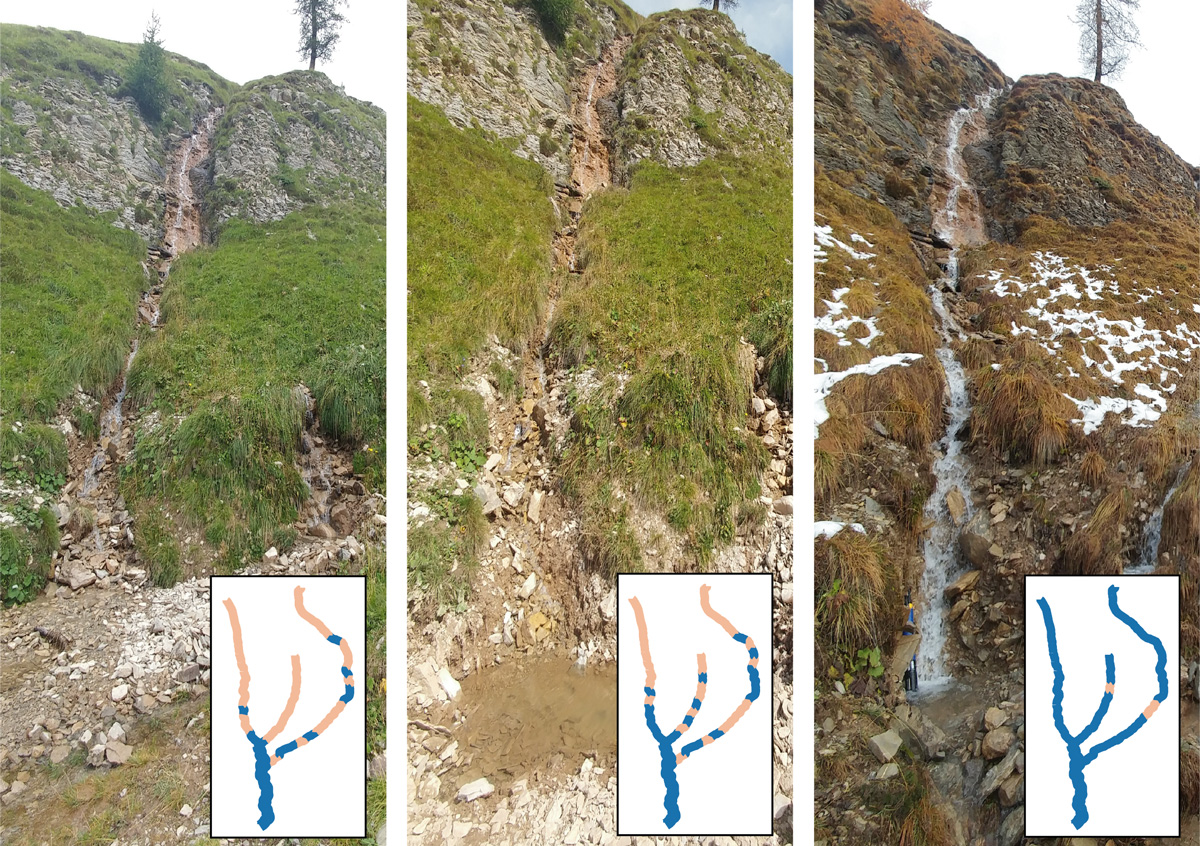Source: Water Resources Research
Temporary rivers are streams that can dry up during portions of the year. Although they are common in many environments and have important effects on the local ecosystem, compared to streams that consistently flow, temporary rivers have been relatively understudied.
Durighetto et al. develop a new method for estimating two important variables for temporary rivers—total active length, which defines the portion of a river network in which flow actually occurs, and streamflow, which quantifies the volume of water the river carries—by using a probabilistic model. This model treats rainfall events as being Poisson distributed (many more light rains than downpours) and converts these pulse events of water input into an estimate of streamflow. The streamflow is then combined with field observations of the sensitivity of the active length to changes in discharge to assess the temporal fluctuations in the total flowing length of a river.
The authors evaluate their approach using data from three field sites located in Italy and the United States with diverse landscape, climatic, and hydrologic characteristics. The model was run to generate estimates of the streamflow and active length, which were then compared with in situ observations. The approach produced estimates that were broadly consistent with field observations, especially at intermediate streamflows. The model was also used to provide a novel classification of river regimes based on key statistical features of the discharge and the total active length, which are taken here as key descriptors of the river response to hydroclimatic patterns. According to the authors, this simple approach may prove to be productive for assessing temporary rivers at broad scales. (Water Resources Research, https://doi.org/10.1029/2021WR031344, 2022)
—Morgan Rehnberg, Science Writer

